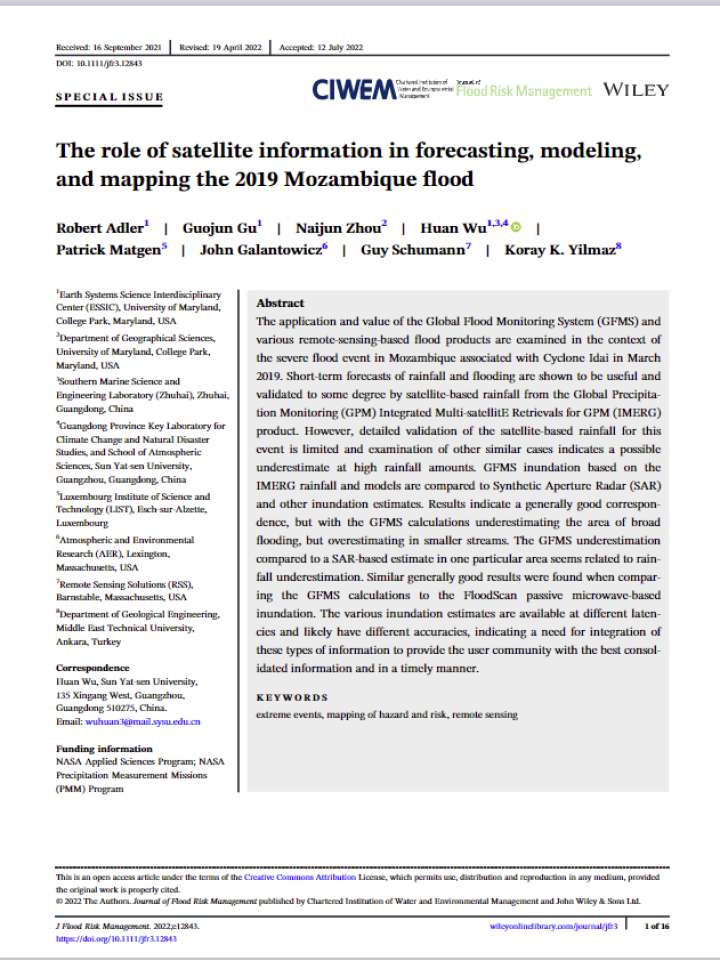The role of satellite information in forecasting, modeling, and mapping the 2019 Mozambique flood
This paper describes and evaluates the application and value of the Global Flood Monitoring System (GFMS) and various remote-sensing-based flood products in the context of the severe flood event in Mozambique associated with Cyclone Idai in March 2019. Remotely-sensed data can provide critical information in such cases when available in a timely fashion. One such source of information is satellite-based rainfall (e.g., IMERG), which in the case of the Mozambique flood of 2019 described in this article, is used as a starting point for flood estimates using the GFMS. The GFMS can provide useful information regarding short-term forecasts, coarse-resolution estimates of flood conditions and streamflow and 1-km resolution estimates of streamflow and floodwater depth and inundation.
The analysis is aimed at aiding in outlining how these products that are mostly used in a research environment might be integrated to provide a more efficient and consolidated source of information for the operational hazard monitoring community. This study uses this example to describe the real-time, satellite-based information available and evaluate certain aspects of the GFMS output, especially the inundation map estimates. A key aspect of the evaluation is the comparison of inundation calculated from the hydrological model estimations driven by the satellite rainfall with inundation estimates made directly from satellite information. The takeaways are:
- The accuracy of the IMERG rainfall itself is critical to any flood calculations, so validation is important.
- There is a tendency of IMERG to underestimate high-end rainfall at the daily scale.
- The GFMS calculations are limited by the rainfall accuracy (based on the satellite rainfall) and the accuracy of the models. Optical-based inundation estimates can be very valuable but require clear skies, which are not always quick to appear in flood cases.
Explore further
